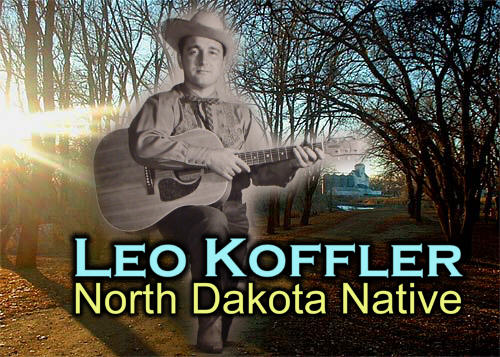|

Leo
David Koffler was born in the small farming community of Amidon, Slope County, North Dakota on March 1, 1924. Leo was brought into this world by a midwife as there were no hospital facilities
to serve that area in those days. The oldest of a family of three boys, he endured a tough upbringing through the Depression
era years, and proved to be an outstanding student in nearby Marmarth High School in an area known to have ancient fossils.
A veteran, he served his country as an electronics technician in the U.S. Army Air Corps in Biloxi, Mississippi. He
worked on aircraft radio equipment. After the war, in 1947, the Army Air Corps would become Keesler Air
Force Base, a technical training base for the U.S. Air Force. In the post war years, he had a long career with the transportation
industry as Station and Freight Manager for the Chicago, Milwaukee, St. Paul & Pacific Railroad in Winifred, Montana from
about 1946 - 1950, followed by a short period as a baker, and then on to a long career with the Union Pacific Railroad at
the Hinkle Train Switching facility near Hermiston, Oregon. There, he served in the capacity as microwave technician/wire
chief until about 1981.
Leo Wins 1953 Major Bowes Amateur Contest
In 1953, Leo
traveled to Salem, Oregon, where he competed with other amateur musicians in various forms of entertainment. Those who
passed an initial screening were invited to compete on the program. Winners were determined by viewers who voted via
letters and phone calls, and winning contestants returned to compete against a crop of new talent on the next program.
Contestants who won three times earned cash prizes or parts in a traveling stage show associated with the program. In
the early 50s, five such shows toured the country. Leo was offered a "job" touring with the stage show, but turned it
down because the starting pay was too low. While most contestants fell into obscurity, others became major stars
like Gladys Knight, Pat Boone, Teresa Brewer, and Frank Sinata. Back home in Stanfield, Oregon, Leo often
entertained patrons at the Jesse James Club, but eventually had to discontinue this due to the demands of raising five young
children in rural Eastern Oregon.
Leo could
play a variety of county & western, middle of the road, and classical melodies without sheet music. In 1940s he, along
with brother Lyle, performed live country music regularly at KRJF, a Miles City, Montana mutual radio station.
During the war years the station featured local live acts entertaining area residents with their 250 watt omnidirectional
signal. Leo and his brother were known as the "The Twilight Boys". Lyle remembers being able to "break glass" with their
harmonizing.
Leo also
enjoyed repairing musical instruments. (He purchased a player piano in the early 60s and completely
refurbished it by gutting the insides and replacing plastic tubing. The piano provided many years of enjoyment for the Koffler
family.
|

